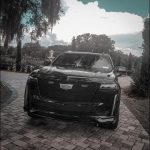In recent years, bulletproof vehicles have become more popular. A description of how they are made
Whatever the cause, there is no doubt that the market for armoring up automobiles is currently booming. People are more interested in their safety, from people who think of their safety and vehicles to CEOs, politicians, and other people who are always in danger, and bulletproofing the car is one of the ways to ensure that.
Although one could theoretically get a vehicle that is armored from the factory, it will really cost a fortune in comparison to similarly equipped vehicles. Even the most affordable commercially available variants cost significantly more than a typical non-bulletproofed automobile.
Only a select few materials can truly be thin enough to fit inside a car and stop the desired dangers while looking for materials to make a bulletproof car.
Ballistic glass is a specialty bulletproof designed to endure increased compression and pressure when bullets would strike a car, so it is definitely not the average crockery. If they are ever attacked, the windows of the car are the most exposed area. So an outside layer of bullet-resistant glass with an inside layer of polymer plastic is the typical formation to get any protection against it.
Door
Undoubtedly, this is one of the car’s easiest-to-reach components. One would want a heavy hinge for support because the vehicle becomes significantly heavier after being armored. A steel hinge with at least three clasps is a sufficient place to begin.
Body
A ballistic steel-plated cover can be used to protect the vehicle’s body. Ballistic materials can also be used to line the interior of the ceiling and floors. The front might be made longer to make the shock bumper larger. They work well as shock absorbers and can help deflect energy from a collision or battle. To ensure that the attacker is unaware of the additional security, these adjustments can be made as discreetly as possible.
A vehicle that is bulletproof can be modified from the ground up or manufactured from scratch by bonding armor to a bare chassis. The latter scenario involves virtually stripping the interior of the target car, truck, or van so that armor may be placed to the walls, roof, pillar posts, firewall, doors, and floor. The weak seams between the doors and the body are sealed by the insertion of strips of armor known as door overlaps. A steel partition may also be present in some armored vehicles between the driver’s seat and the passenger or cargo area.
If made immobile, a bulletproof car or truck can only offer momentary protection. The ability of a bulletproof vehicle to swiftly transport its passengers to safety and away from the scene of violence during an attack is crucial. Therefore, the vehicle’s critical mechanical components must also be protected. Its battery, radiator, and electronic and computer controls are all protected by armor. The gas tank can be fortified and equipped with a self-sealing bladder, which lowers the risk of a fire or explosion while also stopping fuel loss.



